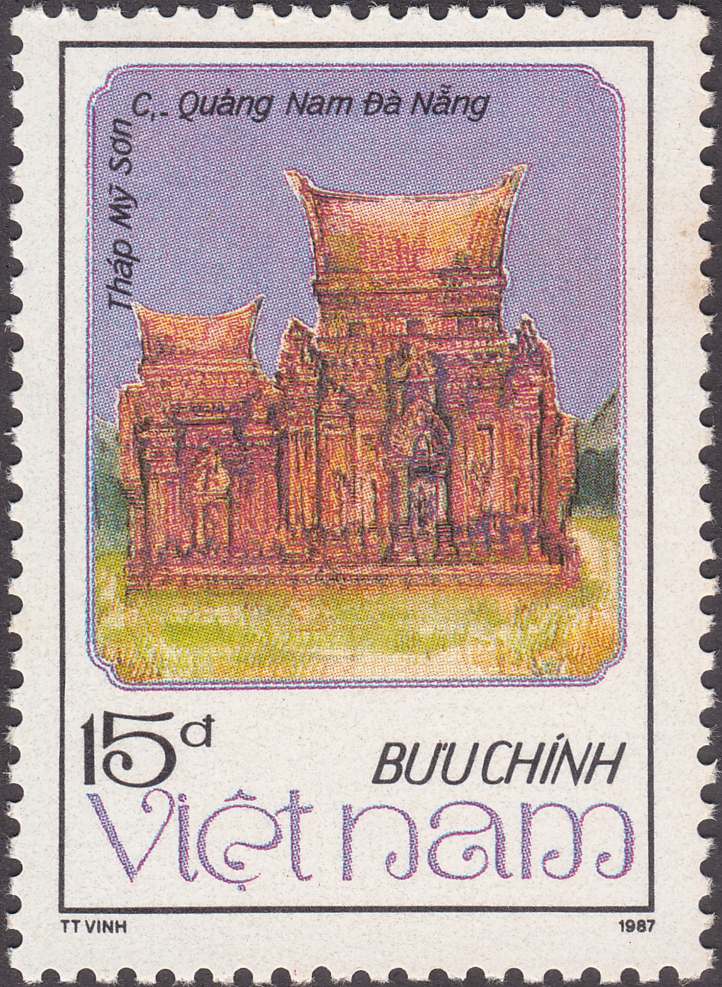WORLD BUDDHIST STAMPS e.GALLERY
bringing the buddhist world at the comfort of your home
| Architectural and sculptural art of Cham people - My Son | |
Architectural and sculptural art of Cham people Stamp featuring My Son - It is a cluster of abandoned and partially ruined Hindu temples in central Vietnam, constructed between the 4th and the 14th century by the Kings of Champa, an Indianized kingdom of the Cham people. The temples are dedicated to the worship of the god Shiva, known under various local names, the most important of which is Bhadreshvara.The valley at Mỹ Sơn was a site of religious ceremony for kings of the ruling dynasties of Champa, as well as a burial place for Cham royalty and national heroes. As of 1999, Mỹ Sơn has been recognized by UNESCO as a world heritage site. The architecture of the Indian rock-cut temples, particularly the sculptures, were widely adopted in South Indian, and Indianised architecture of Cambodian, Annamese (Champa) and Javanese temples. The artistic legacy of Champa consists primarily of sandstone sculptures - both sculpture in the round and relief sculpture - and brick buildings. Some metal statues and decorative items have also survived. Much of the remaining art expresses religious themes, and though some pieces would have been purely decorative, others would have served important functions in the religious life of the Chams, which synthesized elements of Hinduism (especially Saivism), Buddhism and indigenous cults.
The largest collection of Cham art is on exhibit at the Museum of Cham Sculpture in Da Nang. Substantial collections are housed in the Guimet Museum in Paris, the Museum of Vietnamese History in Saigon, and the Museum of History in Hanoi. Smaller collections may be found in the Museum of Fine Arts |
|
| Issued Country | Vietnam |
| Issued Year | 1987 |
| Category | Buddhist Architect World Heritage Buddhist Arts Buddhist Landscape |
| Type | Postage Stamps |
